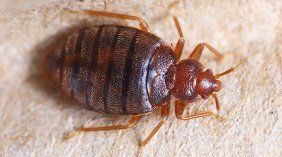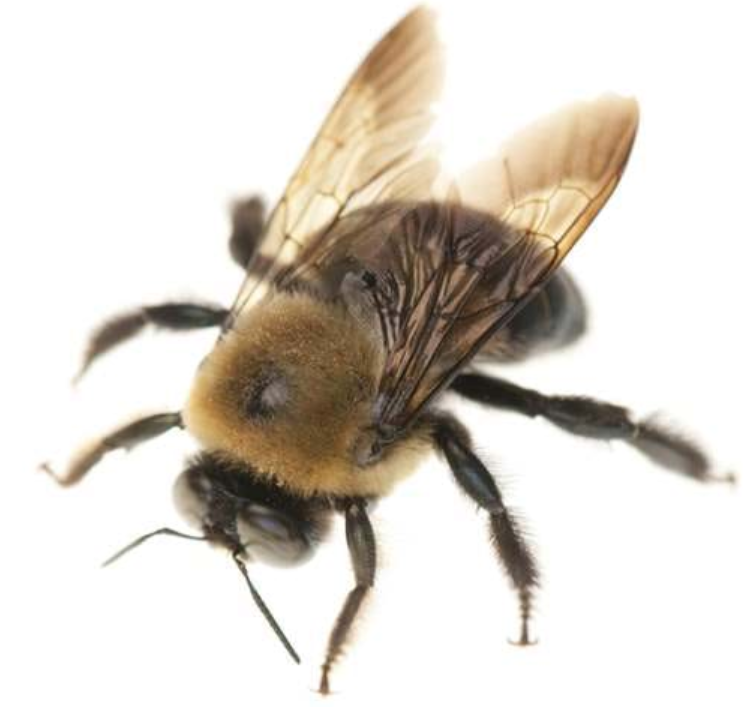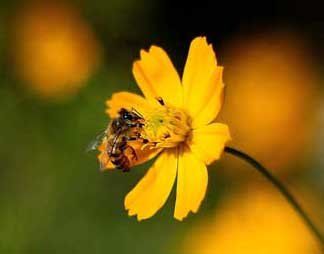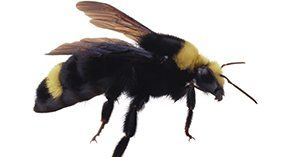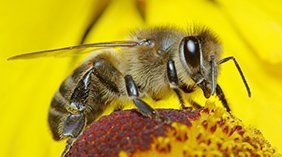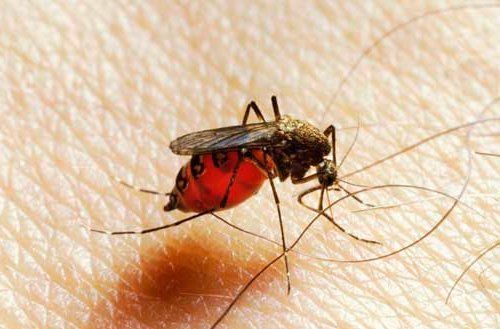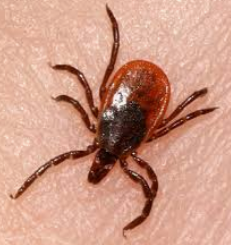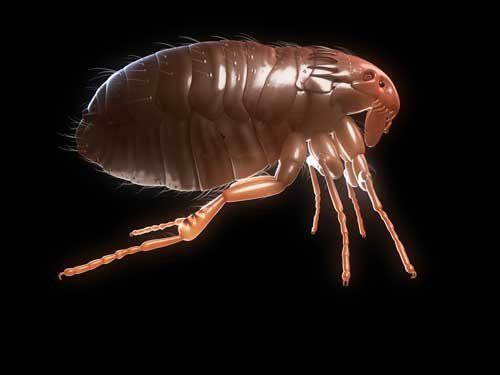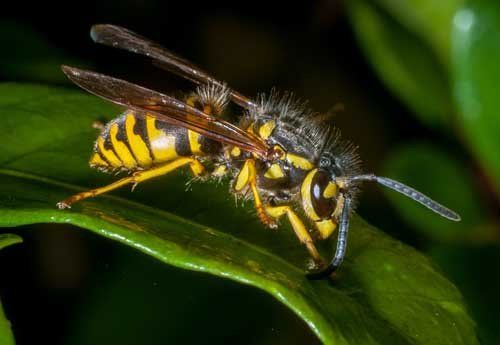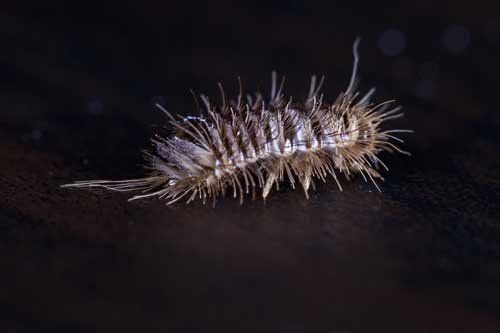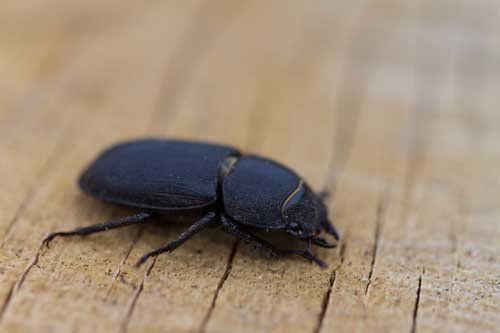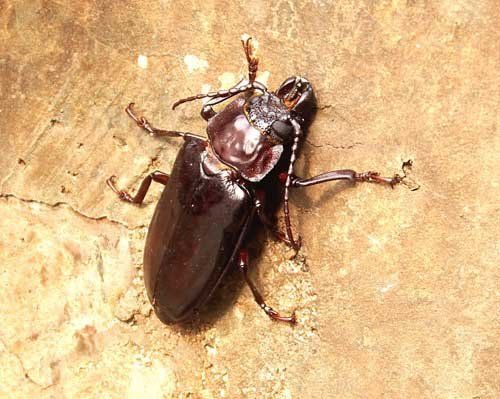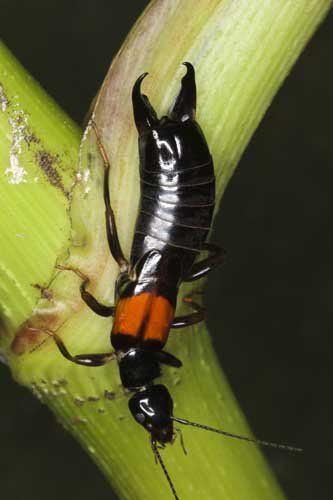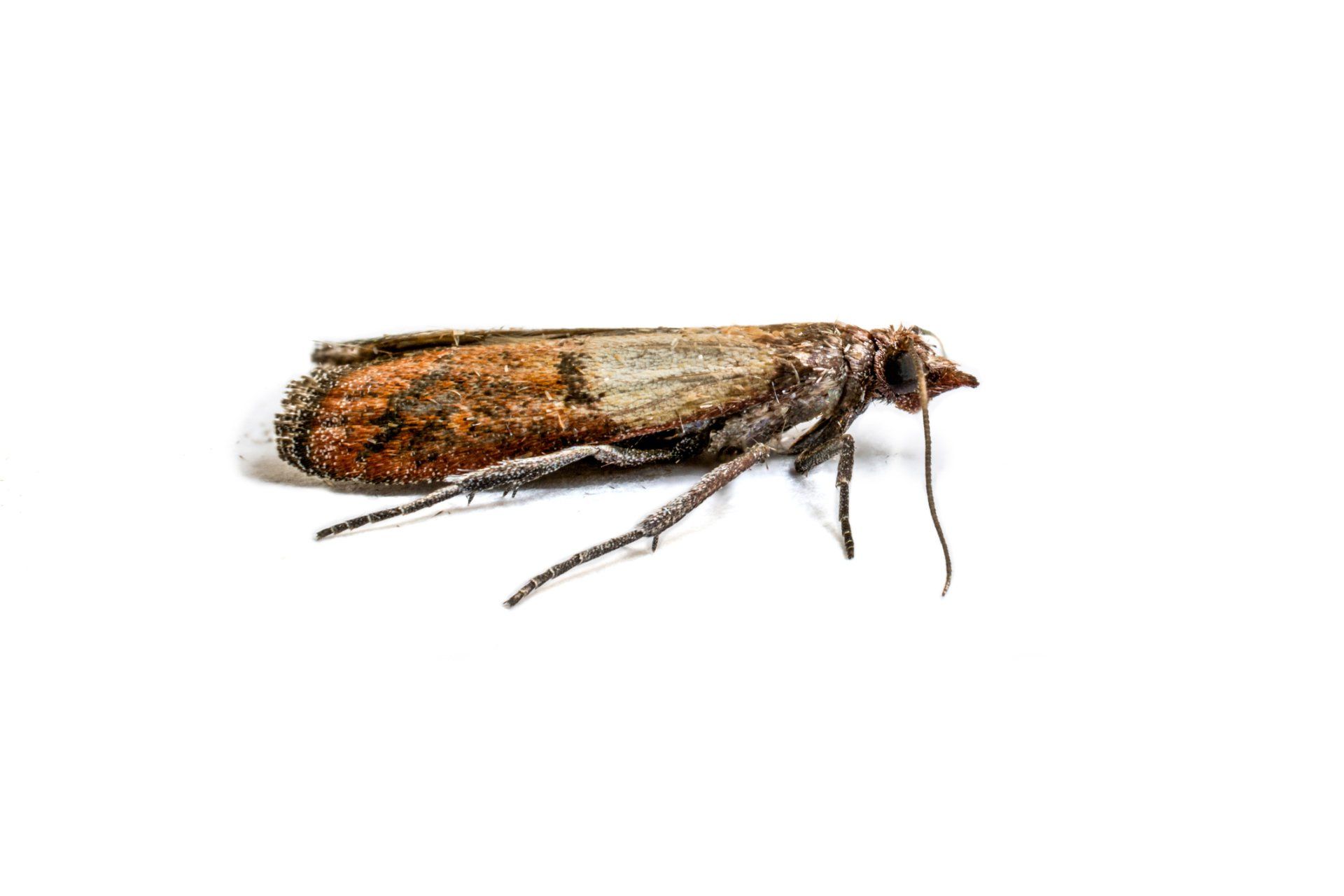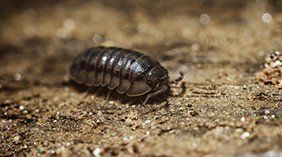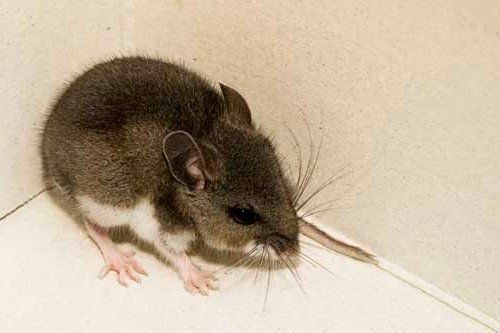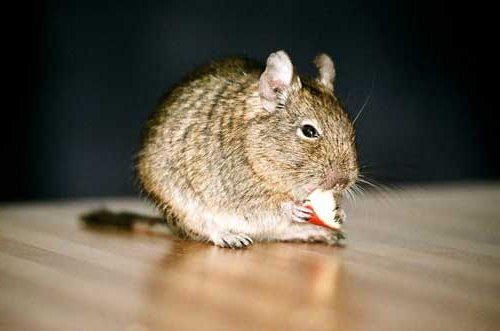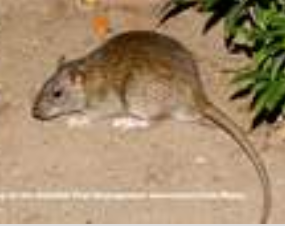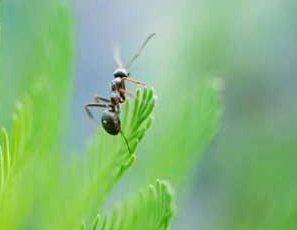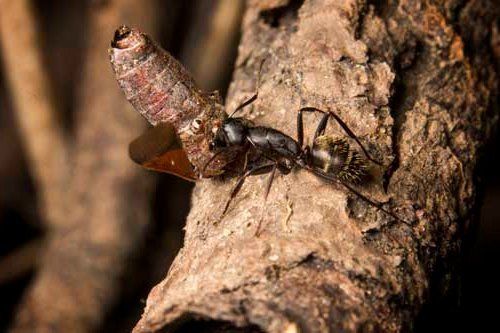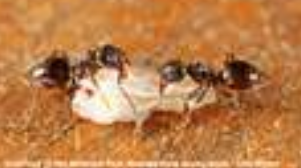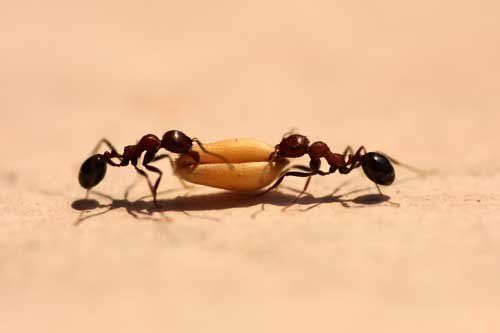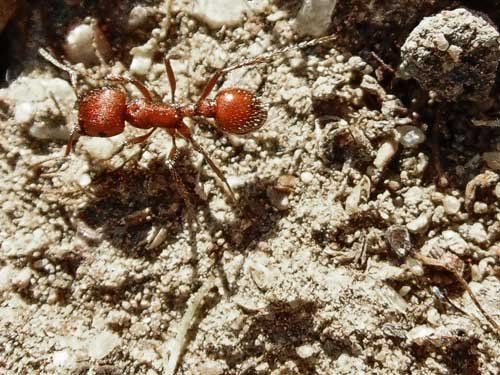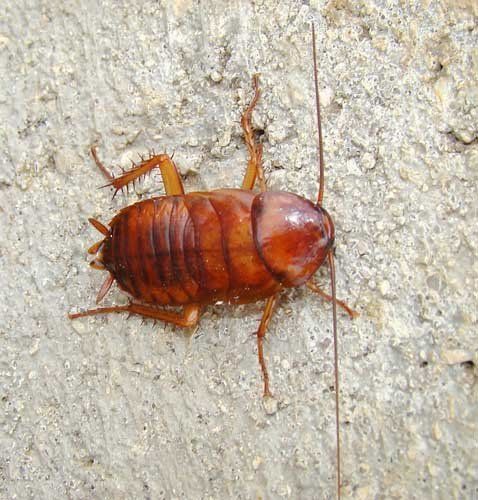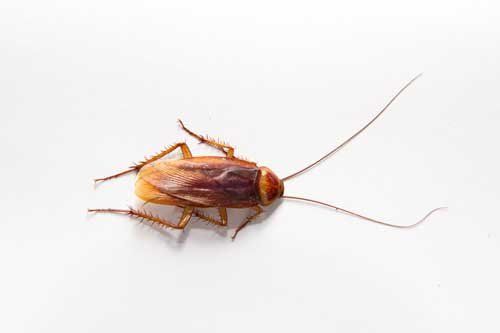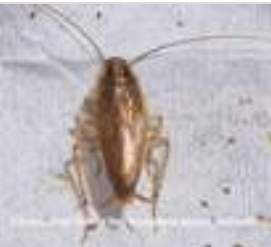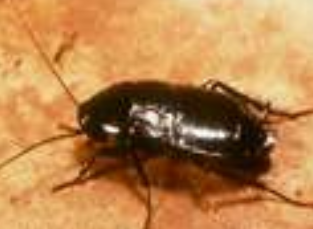Patton Pest Library
We have all experienced these! Yes, you know what they are—wasps, bees, hornets—the denizens of the backyard! There are many varieties in this category. Most are beneficial because of other pests they feed on, but for those who are allergic, these are scary creatures. To locate and treat nesting sites, it is best to call a professional. We know the habits and biology and how to successfully treat a nest or nesting site without getting stung! So leave the treating to us.
Habits
The bed bug is able to crawl into very small crevices in and around the human environment. These include between mattresses, seams in bed linens, upholstery, behind wood trim, inside electrical boxes, in floors, behind wallpaper, and in any other area near a blood meal that will hide a very thin insect. Note, however, that bed bugs will move distances at night for a blood meal which is why infestations occur in beds commonly, so merely washing bed linens or other infested areas might not eliminate the source. Bed bugs are also excellent at relocating by hitching rides in luggage, boxes, shoes, and any other mobile material.
An infestation of bed bugs is NOT evidence of unclean or unsanitary living areas. World class hotels have reported bed bug infestation in recent years perhaps due to the increased domestic and international mobility of society in the past few decades.
Commonly, the first sign of bed bug infestation is the appearance of small brownish or reddish dots on bed linens. These are fecal spots or droppings on the surface of linens from these bugs. Occupants may also notice swelling where they have been bitten.
Control
The first step of control is to have a professional thoroughly inspect the area. This inspection is required to determine the places where the bed bugs are living. Once the inspection is complete, the pest control professional will determine the proper type of control technique; treat the area and most likely return for a follow up inspection.
Habits
Bed bugs like to travel and will hide in suitcases, boxes and shoes to be near a food supply. They are elusive, nocturnal creatures. They can hide behind baseboards, electrical switch plates, picture frames, even wall paper. They come out at night for a blood meal.
Habitat
Bed Bugs like to hide in small cracks and crevices close to a human environment. They can be found behind baseboards, wallpaper, upholstery, and in furniture crevices.
Threats
Although bed bugs can dine on any warm-blooded animal, they primarily dine on humans. Bed bugs do not transmit diseases, but their bites can become red, itchy welts.
Background
This insect has a famous history as a bloodsucker and is named due to its tendency to feed on a bed's occupants at night. The bed bug primarily attacks humans but can feed on any warm blooded animal such as birds, mice, and pets. The bed bug is found worldwide and probably came to the US from Europe in the 17th century.
Identification
Adults are just under a 1/4" long and are relatively flat, nearly as wide as long, and oval in shape compared to most other insects. The color is brown to reddish brown. The body may have short golden hairs and will exude a "sickening sweet" smell from glands on its body. There are many types of bed bugs and related insects.
Reproduction and Biting
Female bedbugs can lay over 500 eggs over a lifetime and each bed bug will molt or shed its shell five times as it grows and a blood meal is required for each molt. If blood meals become scarce, bed bugs can slow their life process until a blood meal source is found. The saliva of the bed bug may cause a swelling on most people when they are bitten but they do not leave a wound. Swelling may include redness in some sensitive people.
Background
Carpenter bees are species in the genus Xylocopa of the subfamily Xylocopinae. The group comprises some 500 species in 31 categories. Members of the related type, Ceratinini, at times are called "small carpenter bees." The common name "carpenter bee" derives from their nesting manners; nearly all species burrow into hard plant material such as dead wood or bamboo.
Habitat
Carpenter bees make their way and settle into wood extensions, barrier columns and trees. They usually crawl between cracks of siding and roofing. When they pierce their way into woods, the hole they drill is about 1/2″ wide. This hole will go straight an inch or two and then turn 90 degrees.
Control
Carpenter bees can be an annoyance to property owners, thanks to their natural tendency of mining into decks, porches, and other wood structures. Males act belligerently during their spring mating season, which can be a bit disturbing if someone is trying to relax on their sundeck. Your first instinct might be to grab a can of bug spray to battle these large bees, but that is not the best approach. To deter carpenter bee activity around your home or business, we highly recommend painting or staining any wood that is used on the structure as well as porches, decks and sheds. For new construction, hardwood as opposed to softwood when building is highly recommended.
Habits
Carpenter bees are not very social. Each female carpenter bee is responsible for laying her own eggs. Nevertheless, from time to time, females may invade the same piece of wood and even share their galleries. Females craft their own corridors by making a hole that is about their own width wide and about 25mm length. They will then make a right turn, scrounging along the grain of the wood. These galleries can be anywhere from 10-15 mm to 3 meters long. If carpenter bees are currently active in a nearby wood, you will notice sawdust or wood shavings on the ground.
Carpenter bees tend to either use the same galleries year after year or create new galleries in the same area year after year. This can lead to increased structural damage and can weaken the structure of the place that they have invaded.
Threats
Naturally, the female carpenter bee will stand guard at the nest entry hole. They tend to defend the nest aggressively and are armed with a stinger. Once the boring has been finished, a female carpenter bee will spend her days scavenging for food. The excavating actions of carpenter bees can cause timber to weaken over time, but it is also the constant activities that take away the wood to get to the eggs inside that can also cause significant damage to wood structures.
Identification
Carpenter bees are a large bee species ranging in size from ½ an inch to 1 inch in length. They are regularly mistaken for bumblebees. However, the main difference is the shiny abdomen of the carpenter bee. A bumble bee’s abdomen is completely covered in dense hair. Males have a white or yellow face and are often hovering near the nest, “guarding” it from predators. Males do not have stingers. Carpenter bee females generally have a completely black or brown face and have a stinger but are docile and will usually only sting if the habitat is invaded or being handled.
Reproduction
Young adult male and female carpenter bees hibernate in the tunnels during the winter. They mate in the spring and set about to clean out and enlarge the old tunnels or to excavate new ones as brood chambers for their offspring. Each chamber is provisioned with a portion of "bee bread," a mixture of pollen and regurgitated nectar, which serves as food for the larvae. An egg is deposited on the food supply, and each chamber is sealed off. There are typically 6 to 8 chambers created by the female. The larvae that hatch from the eggs complete their development and pupate. Newly developed adult carpenter bees surface in August, feed on nectar and return to the tunnels over winter.
Control
Have you noticed carpenter bees activities in your property? Carpenter bees are best left to the professionals at Patton Pest Control
in Novelty, Ohio. Our expert exterminators do not usually recommend do-it-yourself options for carpenter bees. Since carpenter bees are a seasonal pest, treatment is only necessary from around April to September.
Here are some valuable prevention tips:
i. Paint, stain or treat any timber structures that are located on your property.
ii. If possible, use hardwoods to create structures on your property.
iii. Regularly inspect wooden structures for holes and other signs of carpenter bee activity.
Africanized "killer" bees look so much like regular honeybees that the only way to tell the two apart is by measuring their bodies. Africanized bees have different wing measurements than honeybees.
Habits
These bees defend their colony and attack when threatened.
Habitat
Africanized bees have small colonies, so they can build nests in unique places. They have been known to live in tires, crates, boxes, and empty cars.
Threats
Their venom is no more dangerous than regular honeybees-they just tend to attack in greater numbers, which causes more danger to humans.
Bumble bees are beneficial insects because they pollinate crops and plants.
Habits
The occupant of a disturbed bumble bee nest will buzz in a loud volume. They defend their nests aggressively.
Habitat
Bumble bees often nest in the ground, but can be found above ground around patio areas or decks. They will sometimes build their nests in soffits of attics.
Threats
As part of their aggressive defense of their nests, bumble bees will chase nest invaders for a considerable distance. The bumble bee sting is one of the most painful. Unlike honey bees, bumble bees can sting more than once.
Honey bees are social insects found all over the world. They are an extremely important, beneficial insect because of their role in pollination. Honey bees pollinate more than 100 crops in the U.S.
Habits
Honeybees are active pollinators, and produce honey which feeds their young in colder months. The honeybee is the only social insect whose colony can survive many years.
Habitat
Honeybees produce honey from pollen and nectar of the plants they pollinate. They store the honey in honeycombs in their nests. They often build their nests in tree crevices, but will occasionally build nests in attics or chimneys.
Threats
Honeybees do sting, but they only sting once. The sting can be extremely painful if the stinger is not immediately removed from the sting. Persons allergic to insect stings will have a more severe reaction.
One of the best known summer pests, mosquitoes breed in stagnant water or soft soil and can develop from egg to adult in 10 to 14 days.
Habits
Female mosquitoes suck our blood. Male mosquitoes feed on plant nectars. They can develop from egg to adult in 10 to 14 days. They are most active from dusk to dawn and will fly up to 14 miles for a blood meal.
Habitat
Mosquitoes breed in stagnant water sources such as storm drains, old tires, children's wading pools and birdbaths.
Threats
Mosquitoes are well-known to spread diseases such as West Nile Virus, malaria and dengue fever.
The blacklegged tick is named for its dark legs, which are a contrast to its pale body. Blacklegged ticks are sometimes called deer ticks.
Habits
These ticks like to feed on the blood of white-tailed deer, which is why they are sometimes called deer ticks.
Habitat
Blacklegged ticks prefer to hide in grass and shrubs.
Threats
Blacklegged (deer) ticks can spread Lyme Disease.
Fleas are parasites that feed on the blood of any warm-blooded body. The most common species is the cat flea, which often feasts on cats, dogs and humans.
Habits
Fleas transport themselves on rodents and other mammals. They infest both household pests and wild animals. Fleas use their powerful legs to jump as high as 8 inches vertically and 16 inches horizontally.
Habitat
Fleas usually remain on their warm-blooded hosts at all times. They can also be found on shoes, pant legs, or blankets, which can transfer the fleas to new environments. They are often found infesting opossums, raccoons, and skunks in urban settings.
Threats
Fleas are the most common transmitter of the rare Bubonic Plague. They also transmit the bacterial disease murine typhus to humans through infected rats. Their saliva can cause serious Flea Allergy Dermatitus in pets, and their debris has been reported to cause similar allergic reactions in humans. Fleas can also transfer tapeworms and cause anemia in pets. Flea bites commonly cause painful, itchy red bumps.
There are several species of yellowjackets. These flying insects typically have a yellow and black head/face and patterned abdomen. Many say, the pattern resembles stripes. Signature to species, the abdomen pattern can help an entomologist or pest professional identify specific types of yellowjackets.
Habits
Yellowjackets nest in the ground or in cavernous areas such as eaves, attics, etc.... They feed on sweets and proteins and commonly invade outdoor activities.
Habitat
Yellowjackets can be found anyplace humans can be found. Check near recycling bins or other areas where sugars are common but keep in mind these pests also feed on protein. Yellowjackets become more aggressive in autumn when the colony begins to die out except for the queen.
Threats
Yellowjackets pose significant health threats to humans as they may sting repeatedly and can cause allergic reactions. Stinging insects send over 500,000 people to the emergency room each year.
Occasional Invaders & Other Beetles
Not to worry! Referred to as miscellaneous pests, occasional invaders or minor pests, are unusual household trespassers that seem to invade a home or structure. Sometimes their numbers can be very high. For the most part, they want to leave as badly as you'd like them to go. Don't let them overstay their welcome. Patton knows what to do. This group can include Longhorn Beetles, Ladybugs, Pine Seed Bugs, Earwigs, Centipedes, Millipedes, Pill Bugs, Sow Bugs and many others. Sometimes they will disappear on their own as quickly as they appeared, but if they are continuing to give you trouble—call the troubleshooters! Us!
Varied carpet beetles get their name from the rainbow of color on their back surfaces.
Habits
These pests enjoy dining on carpets, woolen fabrics, dead insects, furs, hides, feathers, horns, hair, silk and bones. It can take 249-354 days to three years for varied carpet beetles to grow from an egg to an adult.
Habitat
Varied carpet beetles are found in homes in attics, Oriental carpets, tapestries and wood-based wall-to-wall carpeting.
Threats
Varied carpet beetles feed on dead insects, but also feed on upholstery and carpet, so they can damage those materials. They can also damage clothing fabric.
Powderpost beetles lay their eggs in cracks of wood and the larvae tunnel into the surface, filling it with a very fine powder-like dust. Powderpost beetles have long, narrow, flat bodies that allow them to easily attack wood surfaces. These beetles are reddish-brown in color.
Habits
Adult powderpost beetles are very active at night, enjoy flying and are attracted to the light.
Habitat
Powderpost beetles often attack hardwoods, and can be found in hardwood floors, timbers and crates, antiques and other objects made of hardwood materials.
Threats
Some researchers believe that powderpost beetles are second only to termites in the United States in their destructiveness to wood and wood products.
Merchant grain beetles are typically not found in grain products, but instead like to attack cereals, cake mixes, macaroni, cookies and chocolate. Merchant grain beetles are dark brown and have six saw-like teeth on each side of their bodies. They can grow to be one-eighth of an inch long and have very flat bodies.
Habits
The merchant grain beetle's body shape allows it to crawl into packaging to eat, live and have babies.
Habitat
Merchant grain beetles are found in pantries or in food processing areas or warehouses.
Threats
Merchant grain beetles can infest stored food products and can contaminate food.
Earwigs got their name from the myth that they crawl into sleeping people's ears and tunnel into their brains. The long cerci, or clippers, on their backsides easily identify an earwig.
Habits
Earwigs hide during the day and feeds on leaves, flowers, fruits, mold and insects at night.
Habitat
These insects live together outdoors in large numbers. They can be found under piles of lawn debris, mulch or in tree holes. They gain entry to a structure through exterior cracks
Threats
Contrary to folklore, earwigs do not crawl into ears and eat peoples' brains at night. They do not spread diseases, but their menacing appearance can be alarming to a homeowner.
The Indian meal moth was given its name after an insect scientist found it feeding on corn meal, also known as Indian meal. From wing tip to wing tip, adult moths measure from five-eighths of an inch to three-fourths of an inch long.
Habits
These moths like to feed on dried fruits, grains, seeds, nuts, chocolate, candies, bird seed, dog food, powdered milk, dried red peppers and candy.
Habitat
Attracted to the light, these bugs are found worldwide in areas where food is stored, such as grocery stores.
Threats
Indian Meal Moths infest foods and can contaminate food products.
Pillbugs
Pill Bugs:
This pest is the only crustacean that has become completely adapted to spending its life on land. Pill Bugs have oval bodies and seven pairs of legs.
Armadillilium vulgare
Color:
Dark brown to black
Legs:
Seven pair
Shape:
Oval; round when rolled up
Size:
3/4"
Antennae:
Yes
Flight:
No
This pest is the only crustacean that has become completely adapted to spending its life on land. Pillbugs have oval bodies and seven pairs of legs. They are easily recognized by their back, which is made up of seven hard individual plates. Pillbugs are sometimes referred to as rollie-pollies.
Habits
Pillbugs eat decaying vegetable material and are most active at night. They are known for their ability to roll into a ball.
Habitat
Pillbugs live in moist locations. They are found under damp objects or under vegetable debris.
Threats
Pillbugs do not spread diseases or invade food products. However, the pillbug is often considered a pest when it gains entry into a home.
Rodents
We are not talking about the famous rodent from Florida or Tom's best friend! We are talking about the mice and rats that can sometimes invade our personal spaces. If you don't want to share your personal space with four-legged invaders give us a call. The most common rodent pests are the house mouse, deer or white footed mouse and rats. But occasionally shrews, voles and moles become pests as well. Depending on each individual situation we will customize a treatment that suits your personal needs. If requested we can, also, "rodent proof" your home. Let us know you want this done and we will gladly give you a quote.
House Mouse facts (or some pretty amazing stuff!):
- a mouse can squeeze through a 1/4 inch wide gap
- they are excellent climbers
- they can swim
- they can jump vertically up to 14 inches
- their common lifespan is 15 to 18 months
- they can have litters approximately every 40-50 days (WOW!)
- Sounds like another job for Patton!
The deer mouse rarely invades homes, and is found in rural areas.
Habits
The deer mouse prefers the outdoors.
Habitat
The deer mouse makes its home outdoors in sheltered areas such as hollow tree logs or piles of debris. On the rare occasions the deer mouse comes indoors, it prefers undisturbed areas such as attics.
Threats
The deer mouse transmits the potentially fatal Hantavirus Pulmonary Syndrome. The disease can be transmitted through contact with mouse carcasses, or by breathing in aerosolized urine droplets of infected deer mice.
The house mouse is the most common rodent pest in most parts of the world. It can breed rapidly and adapt quickly to changing conditions.
Habits
House mice can breed throughout the year and can share nests.
Habitat
House mice live in structures, but they can live outdoors.
Threats
Micro droplets of mouse urine can cause allergies in children. Mice can also bring fleas, mites, ticks and lice into your home.
These rats have smaller eyes and ears and shorter tails.
Habits
Rats are excellent climbers and often enter a home in the fall when outside food sources become scarce.
Habitat
Norway rats live in fields, farm lands and in structures. Rats are often found in woodpiles. Rodents can gain entry to a home through a hole the size of a quarter.
Threats
Rats can chew through wiring, causing fires. They also spread numerous diseases.
Prevention
Keep firewood stored well away from the structure. Remove debris piles. Seal any holes larger than 1/4 inch. Remove moisture and harborage sources.
Ants
Ants
Are the dreaded red fire ants marching one by one into your life? That could be the case, as they are among more than 20 varieties of ants that invade or live in homes throughout the country during warmer months. Ants can even live inside year-round if there is adequate heat.
Some ants are truly destructive, such as fire ants and carpenter ants. Then there are honey ants that live outdoors but troop inside regularly for food. Pharaoh's ants never go outside. Other common pests are the odorous house ant, the Argentine ant, and the thief ant.
All ants, destructive or not, share one trait in common: They're unsightly and contaminate food. You definitely want to get rid of these pests quickly.
Argentine ant colonies can grow to monumental size. Their colony borders sometimes cover entire habitats. Argentine ant queens also assist with foraging for food. The ant gives off a musty odor when crushed. Worker argentine ants are about one sixteenth of an inch long. Queen argentine ants are one eighth of an inch to one quarter of an inch long.
Ahh! Here it is, one of the most feared of all insects!
But not to worry, while the Carpenter Ant is considered a wood-destroying insect, it is also an opportunistic and sometimes lazy insect, making nests in areas already damaged by moisture or in voids such as hollow doors and windowsills. It is one of the most frequently encountered pests and often poses the most problems when being treated. An infestation can often come from several nests both inside and outside a structure. So, if you see us being pretty thorough and meticulous when we are treating these common pests, we are doing what needs to be done. No one is immune to their attack! They can be found in the oldest house or structure or the newest. They can live in trees, tree trunks, logs, stumps, railroad ties, woodpiles, etc. Want to identify them? Look for 3 body segments, size ranging from 1/4 inch in workers to more than a 1/2 inch in queens. Look for a dull black color and one nodule located between the abdomen and thorax. They have an evenly rounded thorax and a circle of hairs at the end of the abdomen. Some species may even be reddish or have long yellow hairs. Care to get close enough to check it out? Probably not, but we will gladly identify and treat these amazing creatures.
Finding their nests can be tough. As professionals, we can make educated conjectures based on the information you give us and what is seen while inspecting your home. After servicing, you need to give the treatment a couple of weeks to work, taking careful note of what you are observing. If, after a couple weeks you see no more ants, bingo!
But if you are still seeing them after a couple of weeks we need to come back out and make another assumption. It is like playing that game called "Battleship". You don't know where your opponent's ship is docked, so you keep track of the clues until you sink it. When are carpenter ants most active? At night, so keep your eyes open.
This ant gets its name from the strong, rotten coconut-like smell it gives off when crushed. These tiny insects range in size from one-sixteenth of an inch to one-eighth of an inch long.
Often found lurking around crumbs, sugar bowls and cupboards, these common household pests see your home as the local grocery. They are slow moving and usually 1/10 to 1/8 inch in size with a highly sculptured head and thorax. (Take that to art class!) This is your typical small reddish-brown ant. In the "wild" they build their nests under stones -- turn over any flat stone and take a look. They do not build mounds or hills. In your home they live in cracks in the pavement or under ground level cement slabs. If you don't like sharing your sugar bowl with Pavement Ants then give us a call!
Cockroaches
In recent years many studies have been conducted in inner city tenements especially, to find a relationship between Cockroaches and allergies. Our company was part of such a study with the National Institute of Health in the inner city of Cleveland. Indeed, these tenacious beings have been around for 350 million years and are associated with gastroenteritis, diarrhea, pneumonia, allergies, asthma and more. They are often found in kitchens and can live in one spot all of their life. Their good side, yes, there is one, is that they are born scavengers of bedbugs which is a growing concern! We are specialists in the treatment of roaches and will gladly rid you of this problem.
Cockroaches can happen to anybody -- even the cleanest home can become infested. If it happens to you we have a quick and easy process to get rid of them. The most common roach is the German Cockroach (it is the one we are talking about here). But Oriental, American and Brown Banded Cockroaches are, also, found in our area. There is even a Cockroach called the Pennsylvania Woods Cockroach which lives outside and would starve to death in your kitchen cupboard! It's important to identify which pest is in your home. Often times, it's just a ground beetle and the homeowner is worried over nothing. Patton will identify and let you know what your pest is for free. So, give us a call and bring in or mail us a bug! Be sure to include your name, address and phone number so we can get back to you.
Brown banded cockroaches get their name from the two lighter bands they have across their dark brownish bodies. In addition to the distinctive banding, males have full wings, which reach beyond the tip of their rather pointed abdomens, but females have underdeveloped wings, much shorter than their broad, rounded abdomens. The lighter band markings are much more distinct in nymphs than in adults of either sex.
The German cockroach is the most common cockroach species found worldwide. While German cockroach infestations occur in a variety of human occupied spaces, they are often associated with restaurants, food processing facilities, hotels, nursing homes, and other institutional facilities.
Oriental Cockroaches, Blatta orientalis (L.), are large very dark (almost black, but sometimes dark reddish-brown), shiny cockroaches which live in sewers and similar wet, decaying organic matter. They are sometimes called water bugs because they come out of drains, and black beetle cockroaches because of their smooth, dark bodies. Males are about 1 inch long, with wings that cover only about 3/4 of their abdomen; females are about 1 1/4 inch long, and have only short stubs of wing pads.

